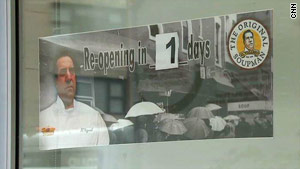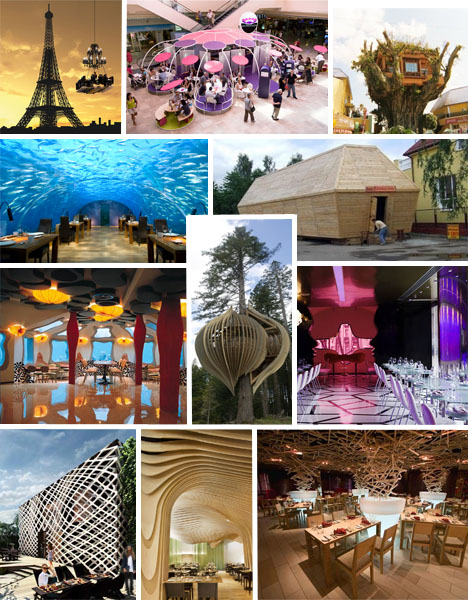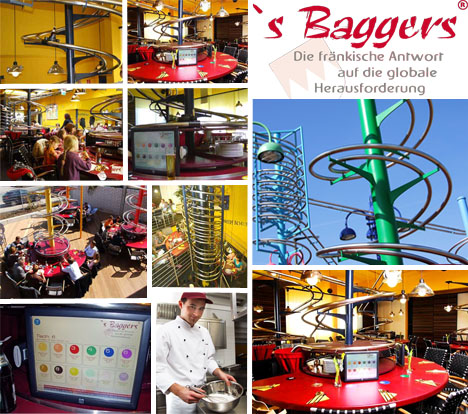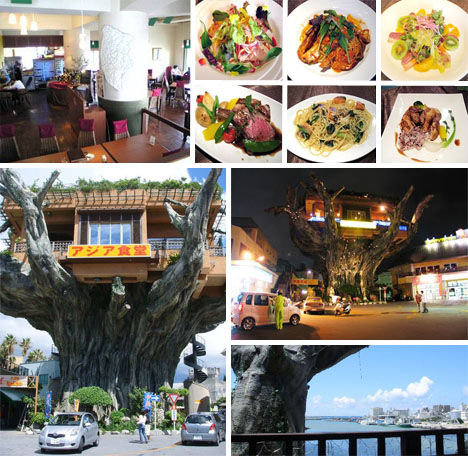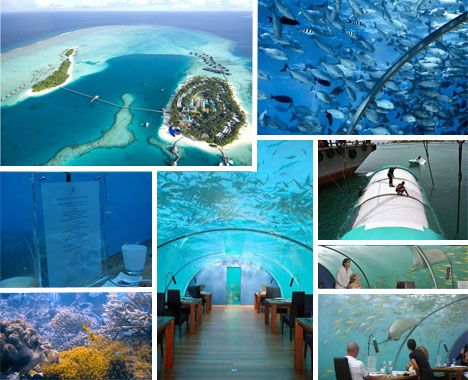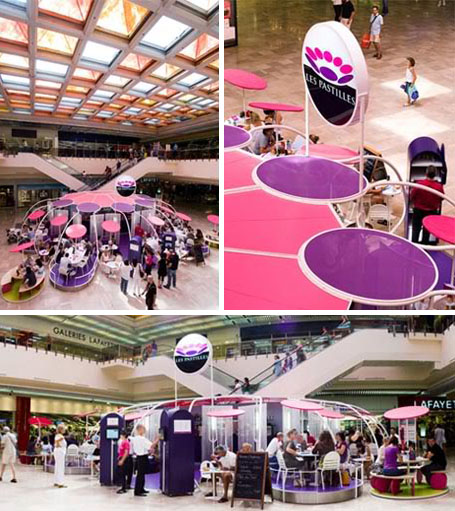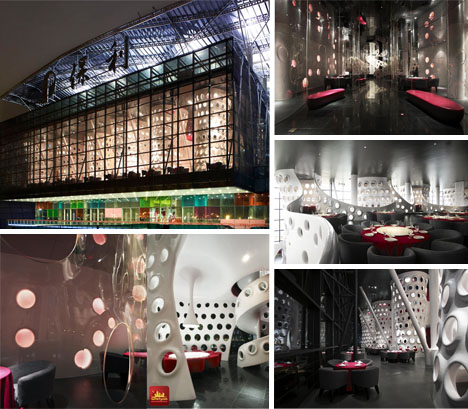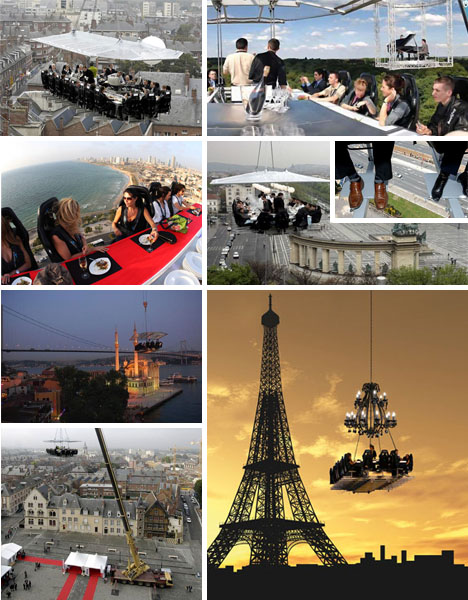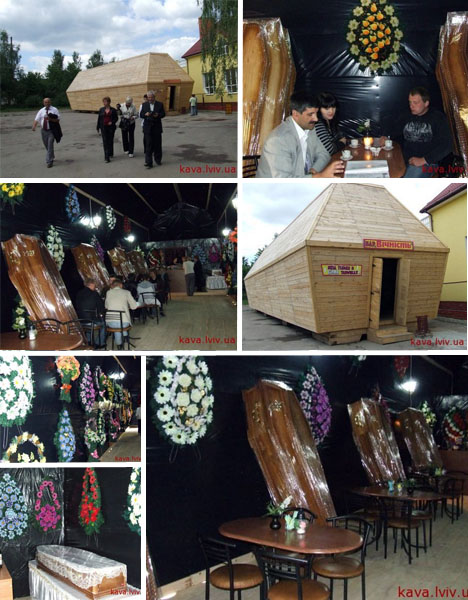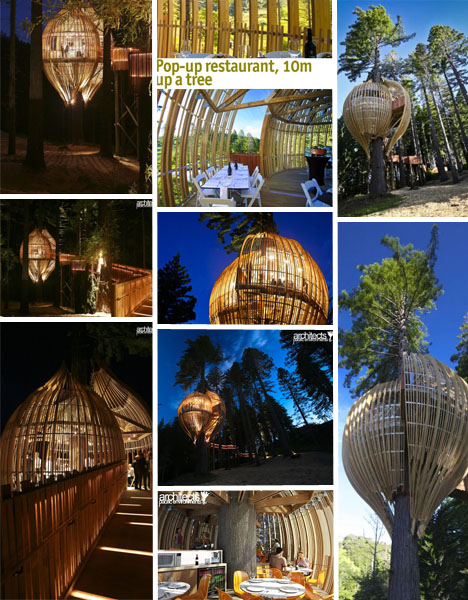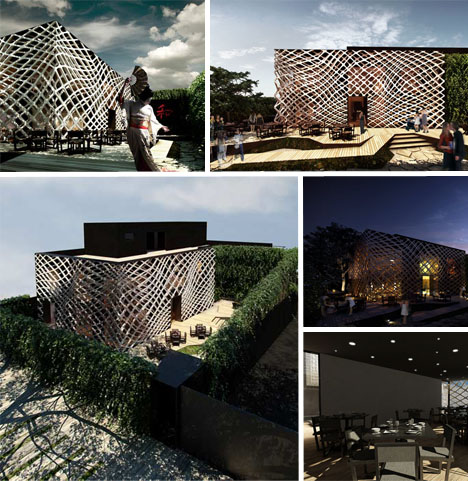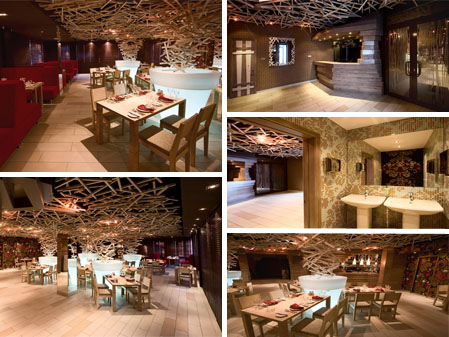From: http://www.nileguide.com/
Anyone with even a slight appreciation of irony would enjoy knowing that hellish prisons around the world, closed down because of overcrowding and human-rights abuse, have reopened as posh hotels and kitschy hostels.
Although it does merit a good chuckle, if you think about it the conversions totally make sense. Constructed as grand buildings intended to house lots of people, jails can easily be turned into hotels once the inmates leave and a construction crew makes a few necessary upgrades (Private bathrooms? Yes please!). It’s a wonderful way to preserve classic architecture in a city and honestly, who doesn’t love a well themed hotel bar. Meet you at Alibi– first round’s on us!
1. The Liberty Hotel – Boston, USA

Image: Ben+Sam/Flickr
Although The Liberty Hotel might have the gosh darn coolest design of any hotel on our list, it certainly wasn’t always that way. Back when The Liberty Hotel was the Charles Street Jail, the place was so overcrowded and nasty-gnarly, the US District Court ruled it was unconstitutional for even criminals to live there.

Image: liluinteriors
Constructed in 1851, the Charles Street Jail was designed by famed Boston architect Gridley James Fox Bryant, who created a massive granite structure with an octagonal rotunda, a 90-foot tall atrium, and 30 arched windows that measured 33 feet high. A mix between a Gothic cathedral and a fortress, the Charles Street Jail was once home to Malcolm X, Sacco and Vanzetti, and Boston mayor James Michael Curley.

Image: The Liberty Hotel
After failing inspections, the Charles Street Jail was closed to inmates in 1990 and renovations began to turn it from an all-around dump into one of the swankiest hotels in Boston. The Liberty Hotel maintained the grand exterior and rotunda while totally refurbishing the jail cells into rooms considerably bigger than the original 7 x 10 foot floor plan.
Interested in rubbing shoulders with the “in” crowd without paying the big bucks to spend the night? Grab an appetizer at The Liberty Hotel’s restaurant Clink (teehee) or a drink at their bar, Alibi (haha), which has an impressive array of celebrity mug shots. Oh, The Liberty Hotel, you’re so clever.

Image: The Liberty Hotel
2. Jail Backpackers – Mount Gambier, Australia

Image: avlxyz/Flickr
Some former jails go through massive renovations led by world renowned architects and top-notch designers. Others kick the prisoners out and open their doors to patrons the next day. The Jail Backpackers (website under construction) falls into the second category. Don’t expect witty jailhouse names or tongue and cheek references here…don’t even expect a private bathroom. The cells haven’t changed much since the prisoners left — except now the doors lock from the inside and the former chapel is used as a common room. The hostel is owned by Gary and Patricia Adams who seem to be an, “if it ‘aint broken, don’t fix it” kind of couple.

Image: avlxyz/Flickr

Image: avlxyz/Flickr

Image: avlxyz/Flickr
If you’re dying to see more, take the $3.30 “grand tour” of the property where a “tour guide” takes patrons around to the solitary confinement cells, a mural painted by the inmates and the old kitchen, and much more:
Volleyball and tennis were played here on the weekends and at the end of each day. In the early days this was not a high security gaol, and sometimes the inmates would climb over the walls, run down to the pub, buy some grog, climb back inside and hide it to drink later. Did you know that tennis nets make good ladders?
An extra enticement for playing tennis was having friends on the outside who would throw in a doped tennis ball. (An ordinary tennis ball with a slit was stuffed with some drugs – mainly marijuana – in a plastic bag. The recipient would swallow these drugs, plastic and all, and retrieve it later in the privacy of his cell, as it passed through him! This ruse didn’t always go as planned, however, and at least one prisoner was very ill because the plastic bag had not been well enough seal; an overdose resulted!
Oh those prisoners, what tricksters!!

Image: Yves B./Flickr
There are prison hotels, and there are Prison Hotels. Karosta Prison is the later. Although it’s no longer in government use, guests pay money to stay in this former prison that treats patrons like they are, well, in prison. Yep. People pay for the chance to experience the joys of being abused as if they had been incarcerated in a Latvian KGB prison circa 1986.

Image: Liepaja Turisms/Flickr
Whether you think Karosta Prison is the cutting edge of reality tourism or can’t really understand the draw of being barked at in Latvian with a Stalin poster hanging in the background, one thing’s for sure… Karosta is NOT playing around. After “check in” with a large, surly guard, “prisoners” are stripped of all their luggage (save a toothbrush), and are berated with rules and then forced to squat, hands behind their head, in a dark, musty corridor. After more verbal abuse and a medical exam, patrons are photographed and given a “prison passport”. Screw any part of this initial process up and you’ll find yourself in solitary confinement for a whole 5 minutes.

Image: Liepaja Turisms/Flickr

Image: Liepaja Turisms/Flickr
After the warm welcome, guests are then fed a delicious meal of stale rye bread, a pickle, and sweet Russian tea before being forced to haul a heavy pallet into a communal cell and make their bed according to army codes. Then it’s 4 minutes of free time, usually involving a trip to the three dirty holes in the ground used as a toilet and using a dripping faucet for teeth brushing. After that, lights out and enforced silence, unless of course the staff decides to walk their guests up for a little manual labor. At 7:30 the next morning guests are promptly kicked out, without breakfast. Sounds fun!!

Image: Karostascieturns/Flickr
Although it’s hard to believe, the prison has garnered a small cult following from Latvian bachelor parties and corporate “team-building”. At least they only charge £7 a night, making it a pretty good deal as far as youth hostels go. If you only want to endure a few hours of this torture, Karosta offers two hour “experiences” in addition to their “extreme package” which involves the overnight stay.
4. Malmaison Oxford – Oxford, UK

Image: Rose Robinson/Flickr
Built in 1870, this Victorian prison seems like it was made to be a hip hotel. With three tiers of cells in the central galley illuminated by massive windows, the original Oxford Prison was considered to be a real 5 star place, as for a prisons go, when it was originally built. But after years of overcrowding, the building was put on up for sale.
The only caveat? The integrity of the original structure had to be completely maintained. Although it was a tall order, we think they did a pretty amazing job modernizing the building with only a few changes (like putting in safety glass, expanding the cells, and upgrading to top of the line en-suite amenities).
 .
.
Image: KiwiCollection

Image: KiwiCollection
They even kept the solitary confinement cells intact, but turned them into a high-brow restaurant, Brasserie.

Image: Onur COSKUN/Flickr

Image: Mohamed Haykal/Flickr
A former Ottoman prison isn’t exactly where you would expect a Four Seasons Hotel, but the ultra-luxe chain decided it was the perfect spot for their Turkish boutique. Built in 1918, Sultanahmet Jail was the first prison constructed in Istanbul and it housed intellectual dissidents, artists and writers who opposed Ottoman rule– yikes! After serving for years as a political jail, it was then turned into a military prison, and was ultimately abandoned in 1969.
The Four Seasons took over in 1992 and spent four years renovating the heck out of this building with a pretty unpleasant past. All “Turkish Delight” jokes aside, they left a few adorable “prison-y” touches — like a large marble pillar with the etchings of a former inmate — but for the most part completely redid the interior of the building in a lush, Four Seasons-worthy design.

Image: rougetete/Flickr
Need another reason to visit this hotel aside from the stunning interior, history-laden exterior, and superb service? Located in the center of Istanbul’s old city, you could pretty much throw a baseball from Sultanahmet and hit either the Blue Mosque, Topkapi Palace or The Hippodrome (Eds note: although we suggest just walking to all three).
6. Hostel Celica, Ljubljana, Slovenia

Image: Anne Gilmour/Flickr
Taken from “11 cool Hotel Bars Around the World“,
It can only be assumed the original occupants of this Slovenian prison weren’t exactly treated with the warmest hospitality. Initially the barracks housed prisoners of the Austro-Hungarian Empire and later on the Yugoslavian Federal Army. After Slovenia claimed its independence in 1991, the future of the building was uncertain: the city wanted to tear it down but artists, who recognized the prison’s cultural history, squatted in the building and ultimately saved it from destruction. After 10 years and huge amounts of work, Hostel Celica opened its doors to travelers in 2003 with the downright heartwarming vision of welcoming strangers into a building that used to confine prisoners, but is now full of art and culture.

Image: Monty Elm/wlnho/Flickr

Image: trepancrafts/Flickr
While Hostel Celica was being renovated, more then 80 local and international artists were invited to decorate the prison-cells-turned-hostel-rooms, and graffiti artists, muralists, and sculptors have covered most of the exterior with urban art. Even though many of the surfaces have been covered, a few remnants of the original architecture remain, including cell bars on the doors to the all the hostel rooms and two former solitary confinement cells.

Image: charliebrummitt/Flickr
Slovenia is still more or less on the backpacker’s trail, so check out Hostel Celica’s Bar and Restaurant if you’re feeling lonesome and want to meet some fellow travelers. It’s located in an atrium in the center of the hostel, is open from 7 am to midnight weekly, and serves local and imported beer, wine, absinthe, and an array of mixed cocktail and shooters. The bar also has a weekly schedule of cute-as-a-button cultural events that happen at night including dancing workshops, jam sessions, and folk music performances.
7. Langholmen Hotel – Stockholm, Sweden

Leave it to the Swedes to turn what was once a Alcatraz twin, into a lush, family-friendly haven. The island of Langholmen is located in central Stockholm and was once rocky and barren, originally home to a penal colony for women in the 1700s, it was then turned into the largest prison in Sweden in the 1800’s. But instead of its inmates lazing around, petting pigeons like they did on Alcatraz, those industrious Swedish prisoners were instead put to work collecting mud and soil to make their rocky prison-island just a tad more homey. With such fertile soil covering the whole island, seeds from merchant vessels easily took root on Langholmen, creating a floral paradise after a few years.

Flash forward to 1975 and the prisoners were moved to off the island, and as a result families began pouring in to take advantage of the gorgeous coastline and beautiful gardens. Naturally, the prison was put to good use to, becoming the Langholmen. Classy, sweet, and design conscious, the Langholmen pretty much encapsulates Swedish living. It even has a few “hostel” room (multiple occupancy) and a tiny prison museum. So cute.

All Images: Langholmen
8. Hosteling International Ottawa Jail Hostel – Ottawa, Canada

Image: Capital Neighborhoods
Built in 1862, the original Carleton County Gaol (gaol means prison in kooky Canadian) was built in a massive, Georgian style that didn’t leave too much doubt about what it was. The beastly building was constructed without heating or toilets in the cells, and as you can imagine prisoners got a little sick of it after a while. By 1972 accusations of prisoner mistreatment really started to fly (it took that long?) and a new gaol was built.

Image: nelisa/hi-hostels
Instead of tearing down the monstrous old building, the Canadian Youth Hostel Association offered to buy it from the state, turning it into the HI-Ottawa Jail Hostel. Most of the prison cells have been left pretty much intact, and instead of sleeping one inmate they now accommodate four bunk beds. This isn’t exactly a step up, but at least you get to leave in the morning.
Need a little more breathing room? The warden’s quarters is available for rent. And make sure not to miss The Carleton County Gaol museum, located on the 8th floor of the old jail– the entire floor was left totally un-renovated to give hostel-staying patrons a taste of the real jailhouse experience.
9. Hotel Katajanokka – Helsinki, Finland

Image: Best Western Premier
After Sweden lost control over Finland and the Russians took over in 1809, they decided the lovely hamlet of Helsinki should be made the capital. And good ‘ol Tsar Nicholas knew the first thing a capital city needs is a prison! And so he commissioned the building of a modern jail in 1832. The original jail structure was completed in 1837 and even came equipped with its own church (which survives to this day and is the second oldest church in Helsinki– wow!). Three more wings were added onto the prison in subsequent years, and it was only in 2002 that it was finally put out of commission due to overcrowding.

Image: Best Western Premier

Image: Best Western/rennygleeson/Flickr
Today the prison is a… Best Western? Although it might seem a tad anti-climactic, the mondo-hotel chain has done a nice job balancing the kitschy and the historical. They merged cells to create larger, more welcoming spaces while maintaining the original jail-house internal structure. The appropriate (but not particularly cleverly named) Restaurant Jailbird is open all day, and there is even a “Prison Break” tour/scavenger hunt offered to guests.
In need of a good laugh? Download the Prison Break PDF pamphlet. Those Finns really know the value of a good costume.
10. Courthouse Hotel Kimpinski – London, England

Although starlets seem to get away with murder in the legal system these days, the bad-ass rock and roll dudes of the ’60s and ’70s weren’t quite so lucky. Where were Mick Jagger, John Lennon, Johnny Rotten and Keith Richards held while awaiting their trials? That would be the small jail below the Great Marlborough Street Magistrate’s Court. Clearly it was THE place to be for the naughty-boy types, many of whom were in trouble for marijuana possession… those rebels!

Image: Billboard
Although still a hip place to be but now without the prison bars, the old court house is a Hotel Kimpinski. Opting out of naming everything inside the hotel after a jail (good work), the old courthouse waiting room is now The Carnaby steak house and the courthouse itself is Silk, an Asian-fusion restaurant.

All Images: Courthouse Hotel
11. Bonus! Sainte-Anne Prison – Avignon, France

Image: Gridskipper
Although it’s not slated for opening until 2013, the 36 million Euros being poured into Sainte-Anne Prison should be enough to spruce it up just a bit. Located in Avignon, or the Palace of Popes, the aforementioned religious men set up camp in Avignon the 14th and 15th centuries and the city remains one of the holiest in France. The project is being undertaken by Marriott who even enlisted Michel Macary — famed architect of the pyramid at the Lourve and the Stade de France, — to help redesign the 13th century prison that was once a medieval insane asylum.
Located next to the papal palace, the prison was for sale as part of France’s new unused-government-owned-real-estate-garage-sale program that was kicked off in the beginning of 2010.







































